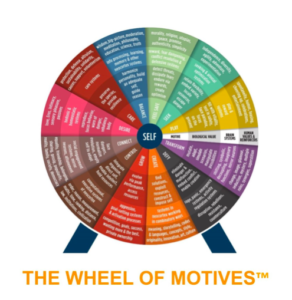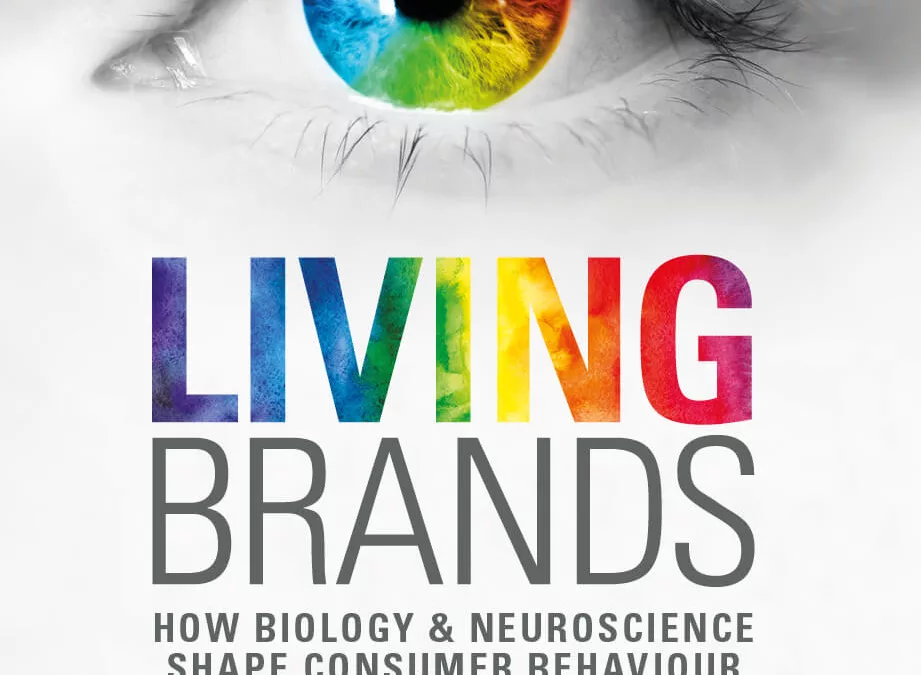The marketer’s North Star is the big idea that viscerally connects with your audience and guides your company’s marketing efforts. It has become the first step whenever I define a marketing strategy for any client. Without your North Star, you are but one in a crowd.
Here is an interesting idea: Rather than a literal product feature, what if your North Star embraced an abstract concept that connects to your customers’ most primitive and fundamental motives – defined by millions of years of evolution? I am talking about the genetically ingrained patterns that have helped people survive and thrive long before we became civilized people.
If you can connect your brand to fulfilling such a basic human need in a customer’s mind, your job as a marketer becomes a lot easier. That is because such primal motives shape our shared communications and provide universal meaning — regardless of the language spoken. That is the central thesis of Dr. Constantinos Pantidos, who describes his years of research in a new book, Living Brands.
Constantinos and I recently met through a mutual friend and colleague, Bryan Mattimore, author of 21 Days to a Big Idea — and later we exchanged books at a local AMA chapter event, where he was the evening’s presenter. I was intrigued with his work and wanted to learn more.
Before the holidays, I caught up with Constantinos in Athens via Zoom. We spoke about how neurobiology and marketing intersect, especially as it relates to establishing a North Star idea your customers will embrace. I will summarize our conversation with quick answers to my four favorite questions: Why? Who? What? How?
Why Does Neurobiology Impact Your Brand?
A North Star that resonates with your Customer Audience is efficient and can reduce the cost of communicating in your markets. Instead of competing on characteristics such as price, speed of service, or product features, focus on the fundamental motives that have helped humans survive and thrive for thousands of years. Evolution has reinforced life-affirming forces throughout our brains and bodies. As a result, behaviors that align with these forces are naturally gratifying. For instance, the Harley Davidson brand embraces defiance – breaking from the status quo. The Lego brand aligns with our desire to create. Coca-Cola offers safety. Through Nike we grow, and we connect with others with Budweiser. Constantinos identifies 12 such motives that such global brands harmonize with to connect with their customers.
While the most successful brands use psychology to define their strategies and consumer proposition, Constantinos’ research shows that neural activity is responsible for emotions, which means our emotions have a biological basis.
Constantinos’ work employs advances in modern sciences, such as neurobiology and cognitive linguistics to go beyond psychological principles. Inclusion of these fields of study helps us to understand human motives and provides direction to brands for how to cut through the fog with clear ideas their customers identify with. If you can identify and rally around the specific motive your brand connects to, with a thematic idea, you will create a distinct competitive advantage that is not easily duplicable or surpassable in the markets you serve.
Who Should Understand How Basic Motives Influence Consumer Behavior?
Marketers, consumer insight managers, advertisers, content producers, designers, PR professionals, agencies, brand owners and entrepreneurs take note: The crux of your work is to understand how biology is linked to basic motivations that inform our everyday lives.

“Care,” for instance, is one of the 12 basic motives that Pantidos identifies in Living Brands. The human values that support this behavior include protection, defense, altruism, sustainability, solidarity and volunteerism. Messages that support these values tap into our brains’ care systems. You will create messages that encompass biological values such as preservation of the species and resilience.
Regardless of your role in the marketing process, you want people to think of and feel your brand on a subconscious level. When your marketing campaigns, websites, articles, videos, advertising and social media posts consistently support any one of Constantinos’ 12 basic motives that align with your customers’ values, you are tapping into universal emotions that have enabled humanity to survive and thrive. This emotional connection enables you to talk at an individual level to people – not target markets or segments. “Care” for example means something unique to every person, though we all share that motive.
What Are the 12 Fundamental Motives?
Every human emotion, Constantinos maintains, is the result of the 12 fundamental human motives. These define the entirety of human civilization, social institutions, culture and values. These 12 motives help us understand the way our customers think and act at every moment:
Constantinos created the “Wheel of Motives,” a model to help you establish the pathways of human behavior most relevant to your brand. At the center of the wheel is “The Self.” Radiating from the center outward in his diagram are the 12 fundamental motives. Then, layered upon the motives are biological value, brain systems, and human values and “reinforcers:”

How Do We Tap Into Consumers’ Core Motives?
The most effective brands develop strategies that use psychology, neuroscience, semiotics and other disciplines and approaches, but these disciplines often don’t collaborate. Constantinos’ work creates the links among biology, affective neuroscience, cognitive linguistics, psychology, cultural anthropology, sociology, and philosophy. From here, Constantinos can tap a level of consumer motivation that he contends conventional consumer research simply cannot reach.
The Living Brands multidisciplinary approach then deconstructs the motives behind purchasing behavior for more than 200 consumer goods categories. This crosstab further shows us the patterns and fundamental dispositions that drive consumer behavior in our own brand’s competitive space, generating new insights and strategic opportunities.
Living Brands offers brand stewards like us a scientific approach to support understanding of brand desirability and efforts to shape consumer behavior. This is true, according to Constantinos, whether you a) seek to eliminate non-core messaging of a successful global brand that has evolved over time to satisfy the fundamental motives by trial and error, or b) you are a startup brand looking to understand why people buy within a specific category and what brand attributes will strike a chord with the motives innate within all of us to identify white space.
At the very core of every buyer’s purchasing decision, you will find the basic life-affirming strategies and biological programs that influence all our choices. Better consumer insights and advanced tools designed around the discipline of neuroscience give marketers significant intelligence to work with and build upon. From the most basic underpinnings of psychological/neural processes that influence and drive consumer responses and behavior, marketers can begin to unlock the “black box” that is the consumer’s mind.
That is exactly where you want to position your brand’s North Star Idea and a perfect starting point for your content strategy.

